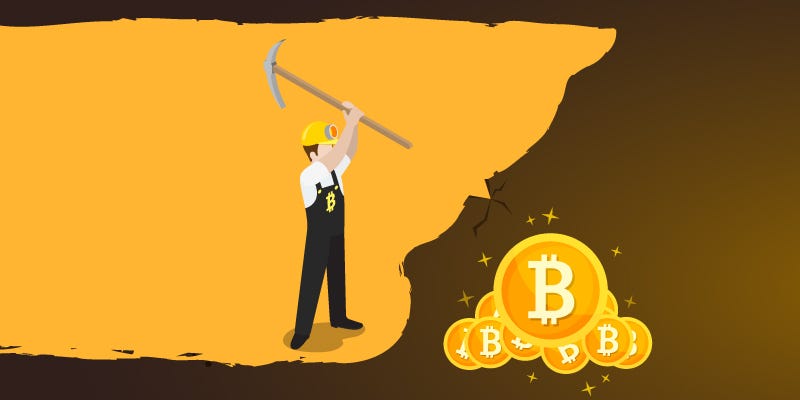How Bitcoin Mining Work?
 |
| Credit : Subhan Nadheem |
Since it's like gold mining in that the bitcoins exist in the convention's outline (similarly as the gold exists underground), yet they haven't been brought out into the light yet (similarly as the gold hasn't yet been uncovered). The bitcoin convention stipulates that 21 million bitcoins will exist sooner or later. What "miners" do is bring them out into the light, a couple at any given moment.
They get the chance to do this as a reward for making blocks of approved exchanges and incorporating them in the blockchain.
rust, bitcoin
Hubs
Backtracking a bit, we should discuss "hubs." A hub is a great PC that runs the bitcoin programming and keeps bitcoin running by taking part in the hand-off of data. Anybody can run a hub, you simply download the bitcoin programming (free) and leave a specific port open (the disadvantage is that it expends vitality and storage room – the system at time of composing takes up around 145GB). Hubs spread bitcoin exchanges around the system. One hub will send data to a couple of hubs that it knows, who will hand-off the data to hubs that they know, and so on. That way it winds up getting around the entire system before long.
A few hubs are mining hubs (as a rule alluded to as "miners"). These gathering extraordinary exchanges into blocks and add them to the blockchain. How would they do this? By understanding a complex numerical astound that is a piece of the bitcoin program, and incorporating the appropriate response in the block. The confuse that necessities unraveling is to locate a number that, when joined with the information in the block and went through a hash work, creates an outcome that is inside a specific range. This is substantially harder than it sounds.
(For trivia lovers, this number is known as a "nonce", which is a link of "number utilized once." For the situation of bitcoin, the nonce is a whole number in the vicinity of 0 and 4,294,967,296.)
Settling the baffle
How would they locate this number? By speculating irregular. The hash work makes it difficult to anticipate what the yield will be. Thus, miners figure the secret number and apply the hash capacity to the mix of that speculated number and the information in the block. The subsequent hash needs to begin with a pre-set up number of zeroes. There's no chance to get of knowing which number will work, since two sequential whole numbers will give fiercely differing outcomes. Also, there might be a few nonces that deliver the coveted outcome, or there might be none (in which case the miners continue attempting, however with an alternate block design).
The primary miner to get a subsequent hash inside the coveted range reports its triumph to whatever is left of the system. The various miners promptly stop deal with that block and begin attempting to make sense of the riddle number for the following one. As a reward for its work, the successful miner gets some new bitcoin.
Financial aspects
At the season of composing, the reward is 12.5 bitcoins, which at time of composing is worth nearly $200,000.
Despite the fact that it's not so cushy an arrangement as it sounds. There are a great deal of mining hubs seeking that reward, and it is an issue of fortunes and processing influence (the all the more speculating counts you can play out, the more fortunate you are).
Likewise, the expenses of being a mining hub are extensive, not just as a result of the intense equipment required (on the off chance that you have a quicker processor than your rivals, you have a superior possibility of finding the right number before they do), yet additionally due to the a lot of power that running these processors expends.
Furthermore, the quantity of bitcoins granted as a reward for unraveling the confuse will diminish. It's 12.5 now, yet it parts at regular intervals or thereabouts (the following one is normal in 2020-21). The estimation of bitcoin with respect to cost of power and equipment could go up finished the following couple of years to mostly remunerate this diminishment, yet it's not sure.
Trouble
The trouble of the computation (the required number of zeroes toward the start of the hash string) is balanced as often as possible, with the goal that it goes up against normal around 10 minutes to process a block.
Why 10 minutes? That is the measure of time that the bitcoin designers believe is vital for an enduring and decreasing stream of new coins until the point when the most extreme number of 21 million is achieved (expected some time in 2140).
On the off chance that you've made it this far, at that point congrats! There is still quite a lot more to clarify about the framework, yet in any event now you have a thought of the wide blueprint of the virtuoso of the programming and the idea. Out of the blue we have a framework that takes into account advantageous advanced moves in a decentralized, sans trust and carefully designed way. The repercussions could be enormous.
Comments
Post a Comment